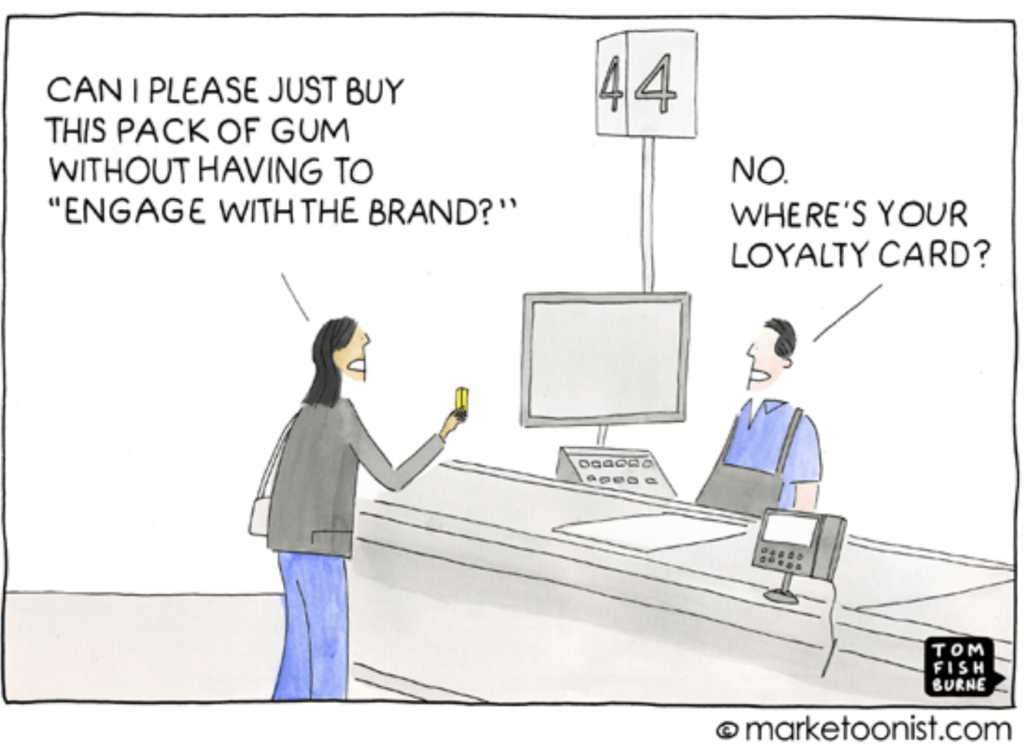
User engagement is treated as the holy grail for marketers. But marketers sometimes operate as if consumers are just waiting around to have a relationship with their product(s). However, we do not want to irritate consumers – as we often end up in over promotion, notifications, messages etc with an objective to influence our users to get them MOTIVATED and ACT.
Motivation is like a spark that drives us to take action.
Whether it’s tackling a challenging project, learning a new skill, or simply getting through daily routines. However, staying motivated can sometimes feel like a roller coaster ride – with ups and downs that depend on our mood, the task at hand, and external factors. This is where gamification steps onto the stage, offering a dynamic and playful approach to enhancing motivation and engagement.
Gamification – A catalyst for changing behaviour
In a world that often feels like a fast-paced adventure, gamification serves as a bridge between mundane tasks and exhilarating accomplishments.

Gamification captures our attention, nurtures motivation, and transforms tasks into engaging journeys.
It’s not just about playing games; it’s about unlocking the potential for consistent motivation in every aspect of our lives. So, whether it’s checking off your to-do list, mastering a new skill, or reaching a personal milestone, remember that gamification can turn the journey into a thrilling, rewarding adventure.
Why Gamification works
The primary goal of games is to provide enjoyment to the players. Games have honed their ability to captivate and motivate players, and it’s from this wealth of knowledge that we’re drawing insights – how to provide sheer enjoyment.
Mostly engagement approaches are “Function-Focused”, designed to get the job done quickly and efficiently. However, Gamification process is “Human-Focused Design” – a design process that optimizes human motivation in a system, as opposed to pure efficiency. Human-Focused Design remembers that people in a system have feelings, insecurities, and reasons why they want or do not want to do certain things, and therefore optimizes their feelings, motivations, and engagement.
Gamification is the craft of deriving fun and engaging elements found typically in games and thoughtfully applying them to real-world or productive activities. Now, it is important to understand that rewards and incentives can motivate a person to start doing a set of actions, but it doesn’t last long without continuous dangling of a carrot. Intrinsic Motivation ensures long term motivation because doing the task itself feels meaningful and rewarding.
Before we speak about how Gamification motivates our core drives, lets create a ‘Gamification Framework’ that would help organize our thinking and explore the role, fit, and potential of gamification.
Gamification Framework:
This framework would help in designing the Gamification approach for a particular product/program/brand.

1) Purpose: What do consumers strives to achieve
Purpose should be meaningful and desirable to the consumer.
2) Goals: What are the tasks/ jobs that consumer wants to (or should) perform
Tasks / jobs should be clearly connected to the ultimate achievement & easily understood as well as performed by the consumers.
3) Behaviours: What actions can consumer take (start, stop or continue)
Actions (change in behavior) should be recognizable, quantified and should lead to the goals.
4) Motivators: What triggers the consumer behaviour
Intrinsic and extrinsic motivators that either encourage or discourage the consumer behavior – in order him/her to achieve the goals.
5) Indicators: How progress can be measured
Indicators or metrics that communicates the consumer’s progress in the direction of his/her goals achievement.
Good use of gamification doesn’t begin with simply adding game elements like points, badges and leader boards but, instead, should start with looking at how it motivates our core drives.
As product creators/designers/developers, it’s crucial for us to carefully choose gamification techniques that align well with the specific context of the product we’re developing. Our aim is to enhance the user’s experience, so the rewards we implement should seamlessly integrate into the narrative of why the user is engaging with our product. These rewards should also harmonize with the user’s inner motivations and cues, ensuring a cohesive and meaningful connection.
I delve into some of the things I’ve learned from Yu-Kai-Chou’s book “Octaylsis Framework — Actionable Gamification, Beyond Points, Badges and Leaderboards.”
Octalysis Gamification Framework (Motivations vs Triggers)
The Octalysis Framework is an award-winning gamification design framework developed by Yu-kai Chou. In his book “Actionable Gamification, Beyond Points, Badges and Leaderboards.”, he proposed eight core drives of gamification, optimizing human motivation and engagement within a system.
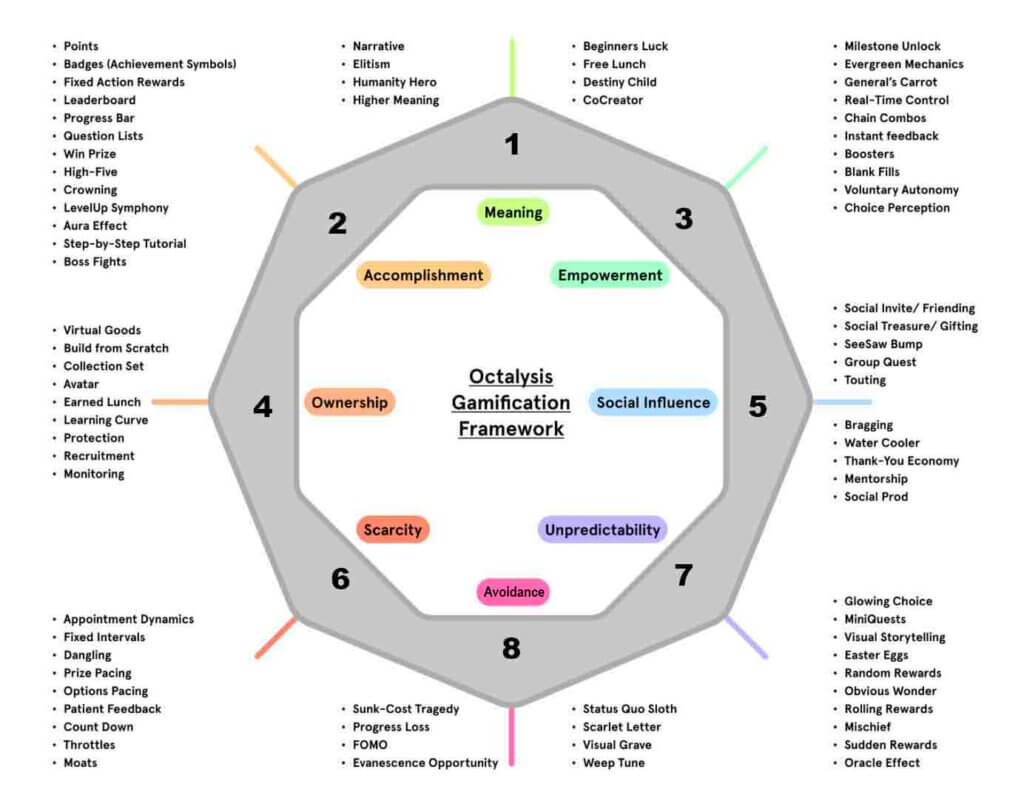
1) Epic Meaning & Calling
The Core Drive where a player believes that he is doing something greater than himself or he was “chosen” to do something. This is a core drive that guides us to seek a higher purpose or meaning beyond our personal goals.
Example: Wikipedia
Users participate in contributing to Wikipedia driven by their desire to enhance the world’s collective knowledge.
1) Epic Meaning & Calling
The Core Drive where a player believes that he is doing something greater than himself or he was “chosen” to do something. This is a core drive that guides us to seek a higher purpose or meaning beyond our personal goals.
Example: Wikipedia
Users participate in contributing to Wikipedia driven by their desire to enhance the world’s collective knowledge.
2) Development & Accomplishment
The internal drive of making progress, developing skills, and eventually overcoming challenges. The core drive is “challenge” here, as a badge or trophy without a challenge is not meaningful at all.
Example: Any.do (productivity app)
Any.do is a comprehensive task management and organization app with a sleek design. The app incorporates gamification by awarding users for completing tasks and maintaining streaks, fostering a sense of accomplishment and motivation.
3) Empowerment of Creativity & Feedback
People not only need ways to express their creativity, but they need to be able to see the results of their creativity, receive feedback, and respond in turn. This is the drive that lets us take delight in “play”, as we immerse ourselves in the joy of the activity in itself.
Example: Yousician (educational app)
Yousician is a Gamified educational app to learn a new instrument. When you’re ready for your lesson, you turn on the app, select your instrument, and choose a lesson or song to play. The key to Yousician is that it listens to you play and gives you immediate feedback.
4) Ownership & Possession
When a player feels a personal attachment to something, the natural inclination is to enhance and expand upon their possessions. This drive is at the heart of the enjoyment derived from collecting items like stamps or puzzle pieces.
Example: Farmville game
This is a fantastic example of Core Drive Ownership & Possession where users actually own the virtual goods in their virtual farms.
5) Social Influence & Relatedness
This drive encompasses all the social factors that influence individuals, such as guidance, validation, interactions, camaraderie, and even the dynamics of rivalry and admiration. This aspect also leverages our inherent spirit of competition and our position in comparison to others.
Example: Coursera Online courses
Coursera is a community driven, allowing students and teachers to collaborate and communicate while taking a course.
6) Scarcity & Impatience
Our longing often centers around the unattainable. This is the drive of wanting something because you can’t have it. This drive fuels our desire for something precisely because of its rarity, exclusivity, or immediate difficulty in acquisition.
Example: Ebay bidding system (ecommerce site)
Users constantly checking back the ecommerce site to see if they have gotten new bids or competition.
7) Unpredictability & Curiosity
Our innate inclination drives us to find excitement in the unknown. The reward centre of our brain becomes active when we come across fresh and unexpected sensations. This accounts for our fondness for surprises and our yearning to explore new experiences.
Example: Instagram/Tiktok (social media)
Users always wonder what will they get next.
8) Loss & Avoidance
This core drive stems from the desire to prevent or evade a negative outcome. It also explains why we are inclined to reduce potential losses or risks in any situation and at every opportunity available.
Example: Ebay bidding system (ecommerce site)
Users constantly checking back the ecommerce site NOT wanting to lose the deal.
Left Brain vs Right Brain Core Drives
The second aspect of the Octalysis Framework deals with the emotional and logical parts of our brain.
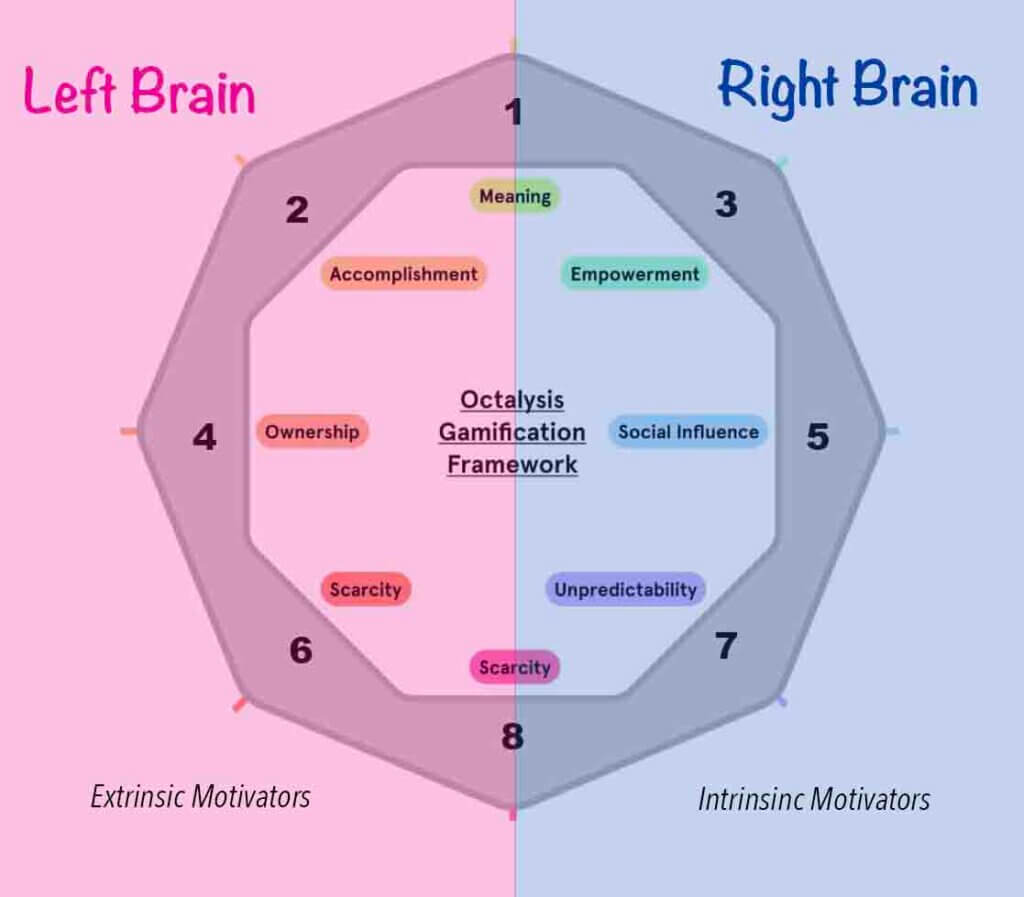
Left Brain Core Drives are associated with logic, calculations and ownership.
They are expressed in the following three Core Drives:
2 – Development & Accomplishment
4 – Ownership & Possession
6 – Scarcity & Impatience
These drivers link to extrinsic motivations i.e. the consumer’s behaviour is solely driven by the motivation to achieve a goal or receive a reward.
Right Brain Core Drives are associated with imagination, personal expression and social connection.
They are expressed in the following three Core Drives:
3 – Empowerment of Creativity & Feedback
5 – Social Influence & Relatedness
7 – Unpredictability & Curiosity
These drivers link to our intrinsic motivations i.e. consumers engage in actions because the activity or experience itself brings them joy.
Example: Farmvile (heavily left-brain sided)
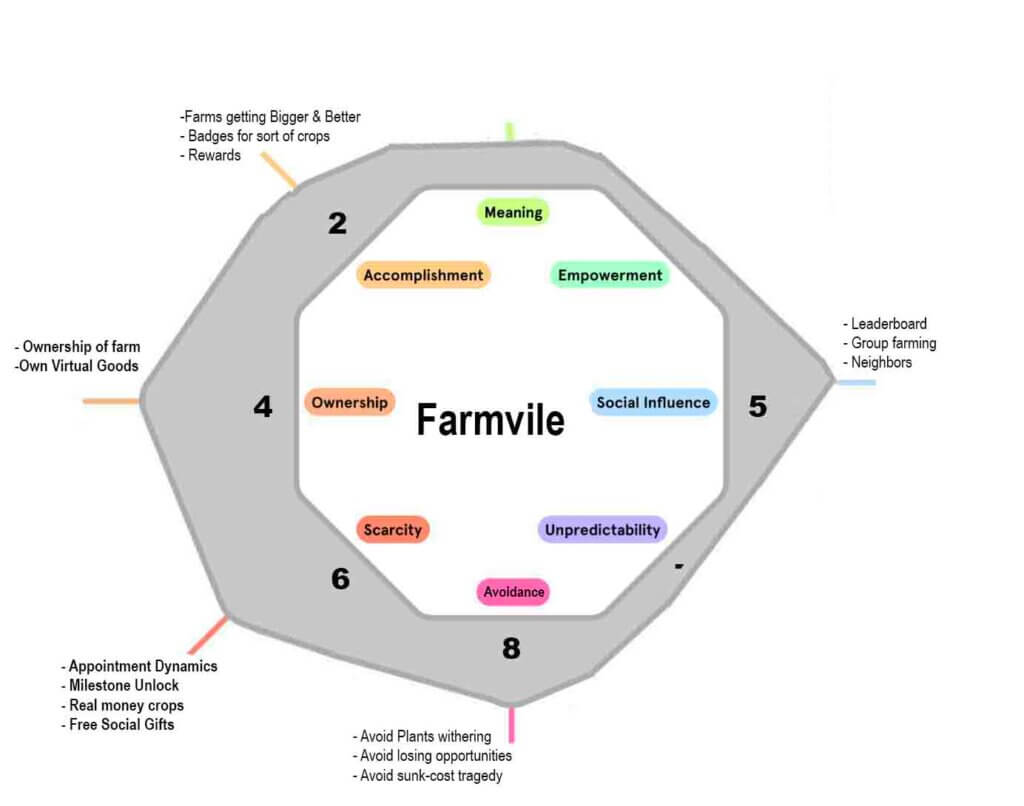
Example: Facebook (right brain sided)
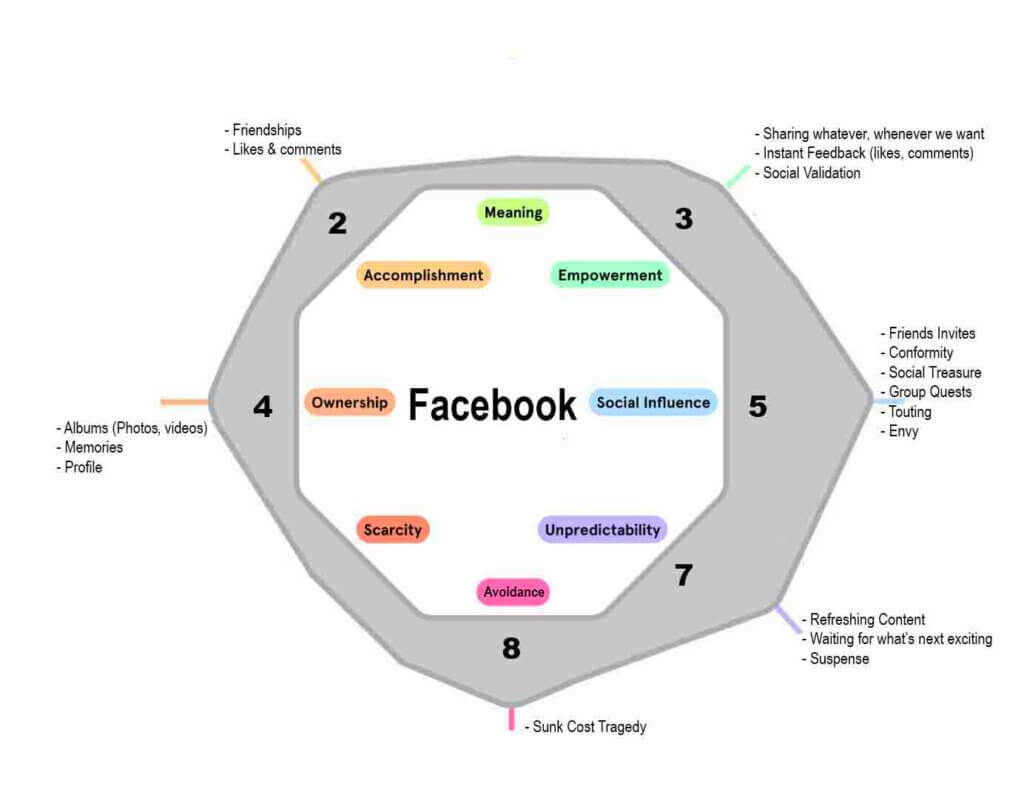
White Hat vs. Black Hat Drivers
The third aspect of the Octalysis Framework is the difference between White Hat and Black Hat Core Drives.
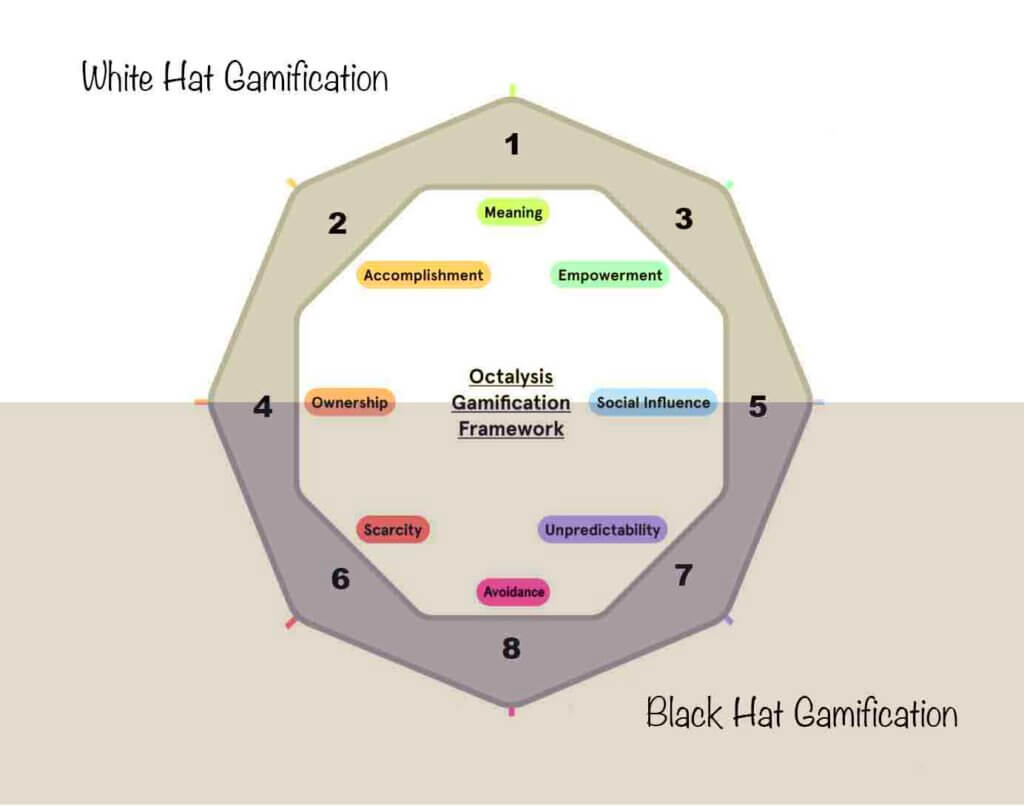
The top core drives are referred to as ‘White Hat’ gamification techniques and are more sustainable long-term and more constructive to users.
They trigger positive emotions such as excitement, happiness and a sense of meaning.
1 – Epic Meaning & Calling
2 – Development & Accomplishment
3 – Empowerment of Creativity & Feedback
These drivers act as the “feel-good” motivators. Users feel more fulfilled and satisfied if they are motivated by the idea of being a part of something much bigger than themselves, improving themselves, growing and using their creativity.
The bottom core drives are referred to as ‘Black Hat’ gamification techniques; they are more sustainable in the short-term and can make us feel like we’re NOT in control of our behaviours.
They trigger negative emotions such as rage, frustration and disappointment.
6 – Scarcity
7 – Unpredictability
8 – Avoidance
Users doing things because they don’t know what will happen next, or because they want to avoid a loss, can leave them feeling anxious and addicted.
Nonetheless, White Hat Drives lack the ability to instil a feeling of urgency, whereas Black Hat Drives prove adept at prompting immediate action.
Gamification Score
A well-designed gamified system doesn’t necessarily require all core drives, but it should excel in the ones it chooses to incorporate. Certain highly successful products thrive by effectively utilizing Social Influence, while others focus primarily on Scarcity.
To calculate the Gamification score, you assign a score between 0 and 1 using available data and experiential insights, and then square that score to determine the Core Drive Score. Summing up these eight Core Drive Scores will yield the ultimate Gamification Score.
What’s the future of Gamification?
We tend to believe that we’re immune to influence or cognitive biases because we seek a sense of control. However, industries such as alcohol, tobacco, fast food, and gaming understand our susceptibility to cognitive and emotional vulnerabilities.
We are driven by emotions. Our brains comprise three components:
– the primal brain (handling instincts),
– the emotional brain (dealing with feelings), and
– the analytical brain (responsible for logical decision-making).
Currently, this gamification is mainly confined to social media, digital platforms and the technologies alike, but as our lives become increasingly intertwined with networked information structures designed to exploit our cognitive weaknesses, a question arises –
“Is it desirable to inhabit a ‘gamified’ environment that manipulates our fixations and toys with our existence as if we’re part of its game?”
The above question quoted by Christopher Wylie, author of Mindf*ck, also mentions that we are all vulnerable to manipulation. We make judgments based on the information available to us, but we are all susceptible to manipulation when our access to that information becomes mediated. Over time, our biases can become amplified without us even realising it.
I think the best gamification projects should create a sense of fun and happiness in the user through a thorough understanding of
– fun,
– motivation, and
– expectations.
At its heart, the prime goal of gamification is to drive more engagement and inspire the user to participate more often in a process, activity or content.
References:
yukaichou.com/gamification-examples/octalysis-complete-gamification-framework
interaction-design.org/literature/article/the-use-of-story-and-emotions-in-gamification
kickframe.com/blog/2014/11/4/gamification-framework
Image reference:
cami-design.com/development-practice/gamification
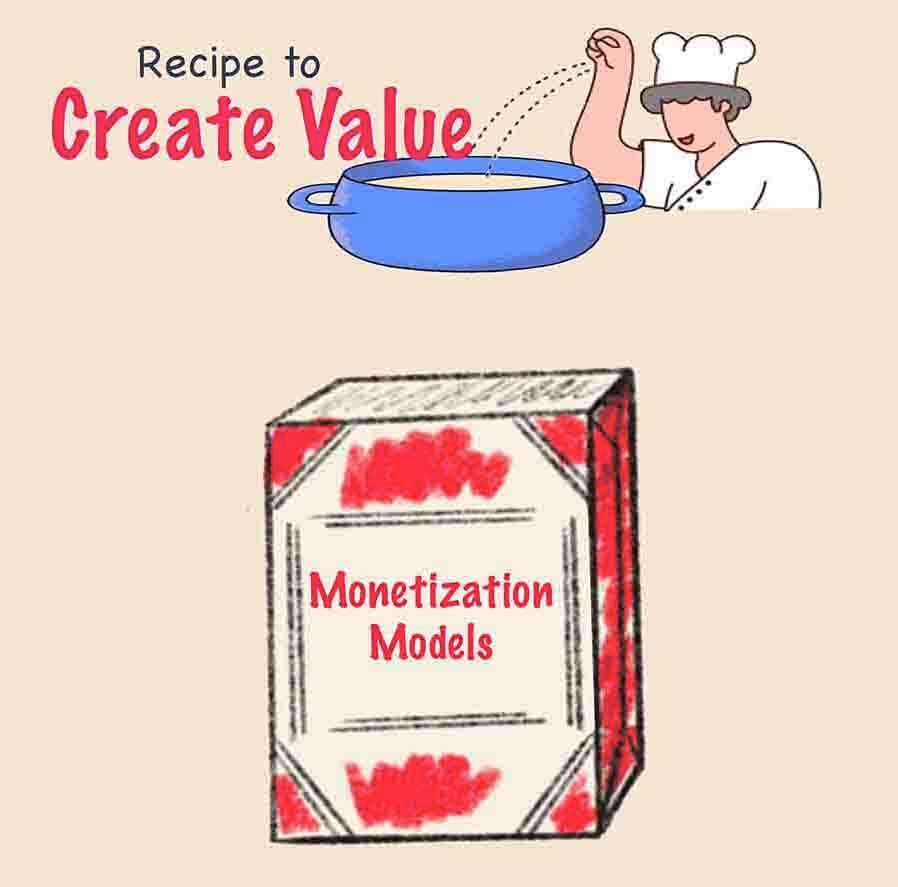
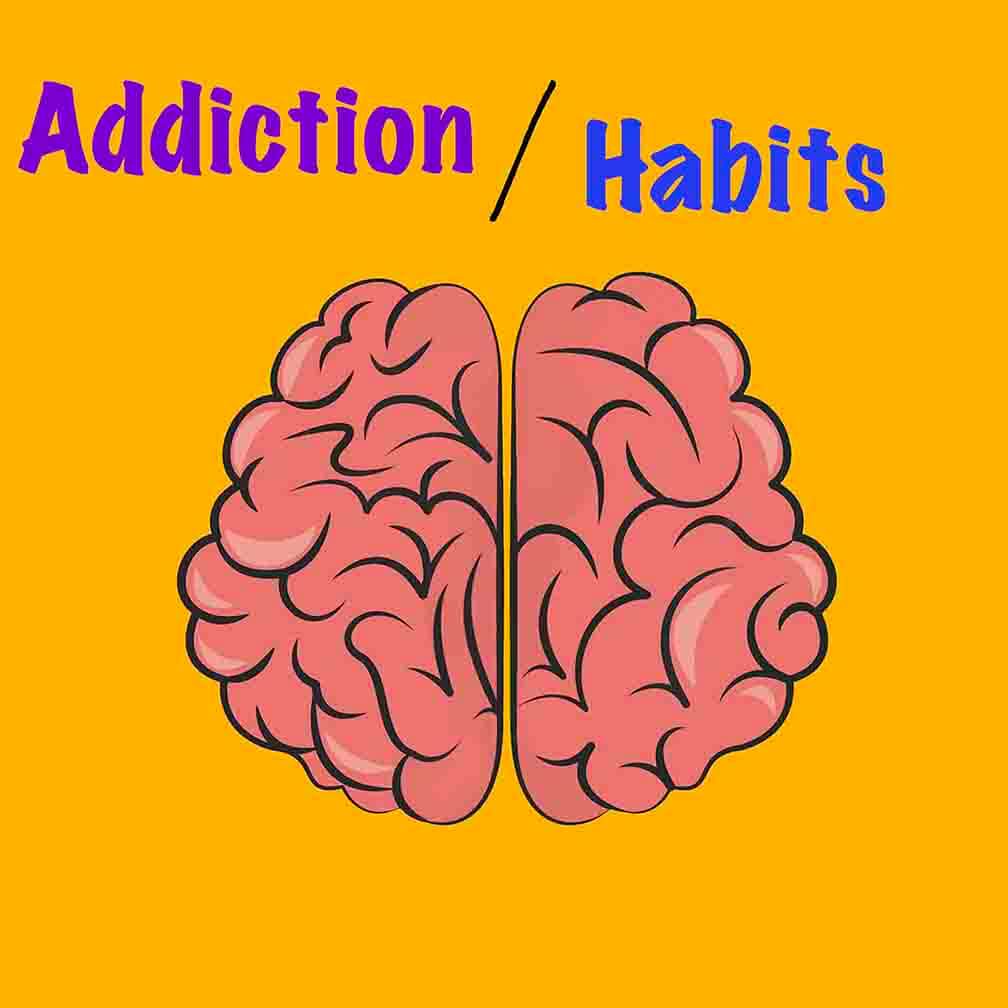
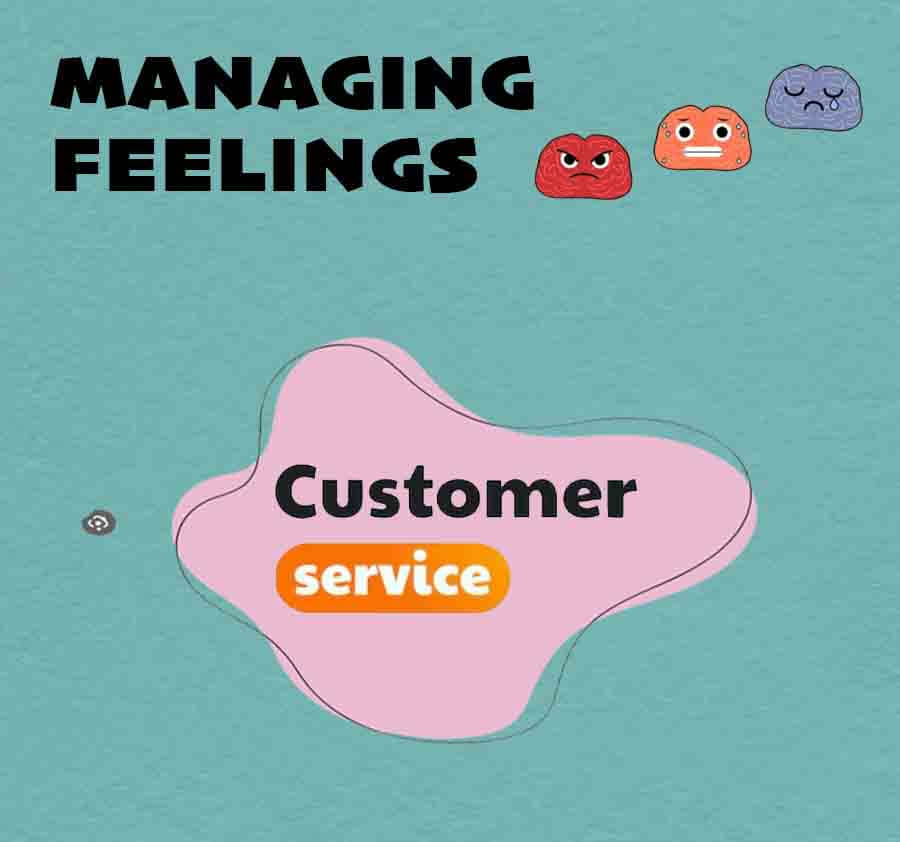
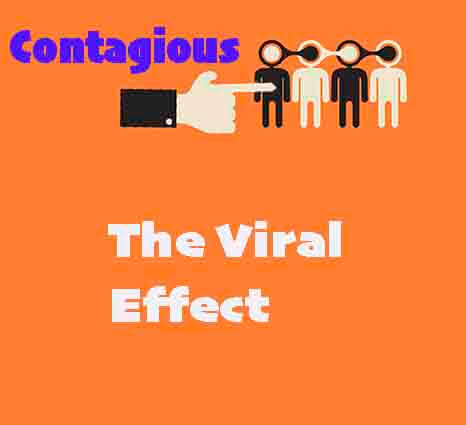
 Swipe for more stories
Swipe for more stories
Comments